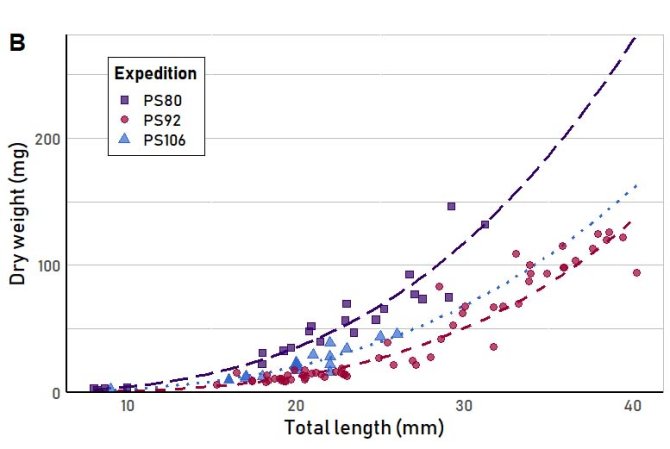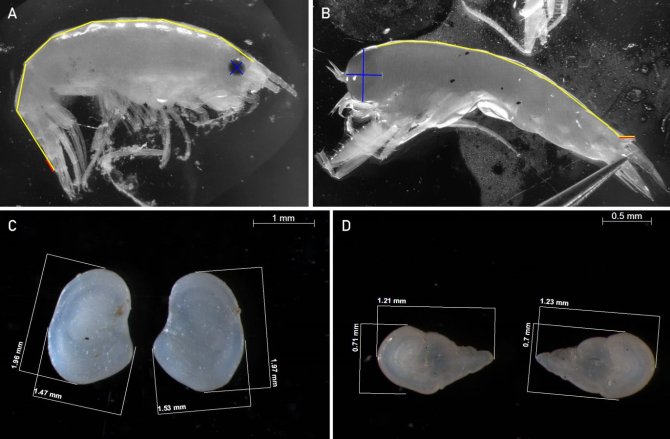
News
To measure is to know: how long is a krill and how heavy is polar cod?
A lot is measured and weighed in biological research. Researchers from Wageningen Marine Research and partners published measurements of more than 3000 individuals of 29 species of marine animals from the polar regions in the scientific journal Polar Biology. Relationships between the length and weight of animals, and between different body parts, were also analyzed in this study.
A few thousand sea creatures from the polar regions measured and weighed
In biological research on an organism, size and weight of the examined animals are often determined. This way the measurements can be compared (for example the fat content per gram of fish is easier to compare than the content per individual fish if they are not of the same size) and possible differences between groups can be investigated (for example the diet of large and small fish of the same species). However, the measured sizes and weights of the animals themselves are often not published. During the collaborating ICEFLUX projects of Wageningen Marine Research and the German Alfred Wegener Institute, several thousand animals from both the Southern Ocean around Antarctica and the Arctic Ocean were measured and weighed for various purposes. All these measurements have now been collected and published.
Relationships between length and weight
Publishing lengths and weights is important because such data can be used for different purposes. In particular, the relationships between length and weight, and differences in these relationships between seasons, for example, can say something about the animal's lifestyle or condition. In addition, other researchers can use these relationships to estimate the weight of their study object in cases where direct weighing is not possible, for example in hydro-acoustic research. For this reason, length-weight relationships of many of the measured Antarctic and Arctic species were investigated and compared. The results of this can also be found in the publication in Polar Biology.

Information on the size of body parts is helpful
In addition to length and weight, measurements were done on body parts of various animals examined. Relationships between these parts can provide insight into, for example, differences in growth in animals of different ages. In addition, the relationships can be used to estimate the size of the entire animal based on the length of a particular body part. This is often used in dietary research. Information about the size of the prey of the studied animal in question provides insight into its position in the food web. However, due to digestion, eaten prey animals can often no longer be measured directly.
